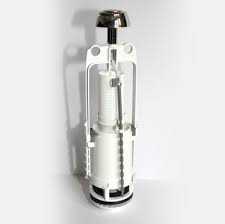How Much Does It Cost To Fit a WC Cistern Ball Cock?

Cost To Fit a WC Cistern Ball Cock
| Job | Description (these prices include all materials) | Labour |
| 1 | Fit a new Portsmouth valve. (I kid you not, that’s what a conventional ball valve is called). It will take an hour from the time he parks his van. | £75 |
| 2 | Swap a new-fangled “Leaning Tower of Pisa” valve. (That’s what they look like).
He will probably have to make two trips. | £150 |
“Labour” at £175 a day (tradesman) £100 (labourer), includes incidental fixings etc. and tipping. “Materials” if mentioned, are larger things (a boiler) and stuff only you can choose (tiles etc). Also VAT must be added all round.
Information Sheet on the Cost of Replacing a WC Ballcock
From the title you will see that ballcocks in the loft aren’t covered here.
There are now two kinds of toilet cistern. Proper, “British through and through” ones, with a manly handle on the front and then there’s those foreign ones, with delicate little silver buttons on the top.
Guess which one gives the most grief and therefore costs more to replace! A plumber will carry spares for the good old British ones in his van and can do the job in 10 minutes. If the cistern is one of those with the two silver crescent flushing buttons in the middle, he now has to start a dismantling process and of course it all needs reassembling again afterwards and does it ever go back properly? He will also have to take a trip to the plumbers’ merchants to collect the unbelievably complicated nonsense which is squeezed into those European affairs (if he’s lucky he may even return with the correct assembly– but don’t hold your breath!)
A note on overflows. Modern lavatories can now have an internal one. That means when the valve fails, overflowing water can now be directed into the lavatory bowl. So if your “khasi”, (sorry, I can only say lavatory a few times before the old rough edges start to poke through), is running all the time, that’s why.
Also if the cistern supply has no handy stop tap (usually fitted “in line” in the form of the jollily named “ball o fix” valve), then he will either have to find the mains stop cock if the supply is on mains pressure, or go rooting around in the airing cupboard to find the stop valve, if the cistern is supplied from the tank in the loft.
You can see why all those accountants are now training to be plumbers – years of fun and games ahead of them!
FAQs 'traffic light' guide
-
What's easy about this job…
Open or CloseSame fitting, in and out in an hour!
-
What's tricky about this job…
Open or CloseCompatibility. Does he stock the spares for your fancy new ballcock?
-
Potential problems with regards to this job…
Open or CloseLimescale caked onto fittings. Rust. Leaks. An overhead Victorian gravity cistern will present a whole host of potential problems. No least access!
www.buildingsheriff.com
Copyright The Building Sheriff Ltd 2017